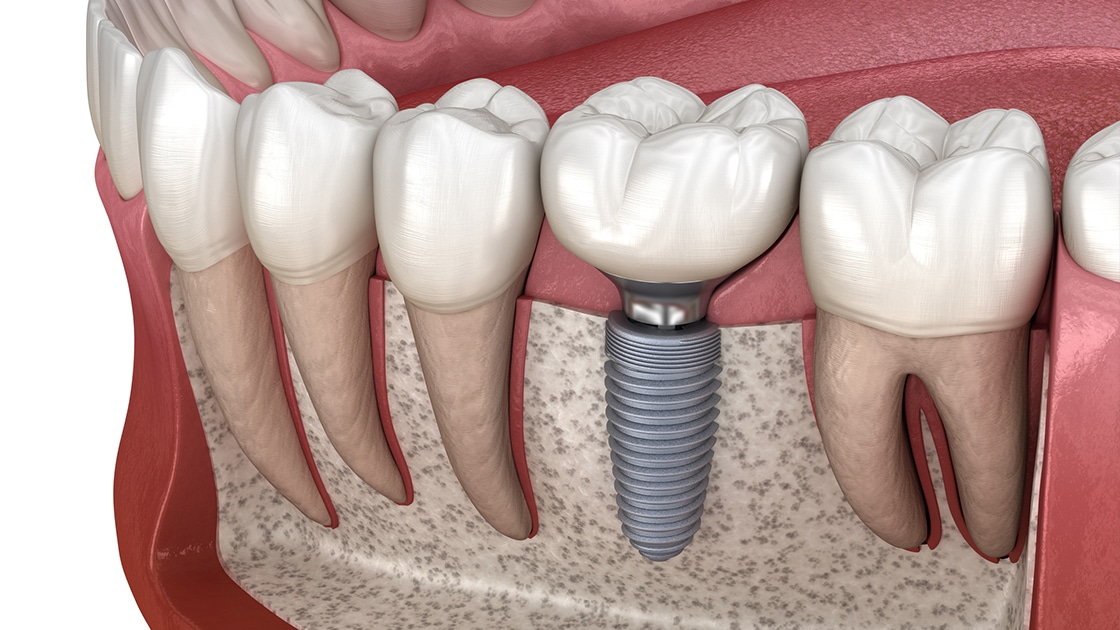10 Easy Facts About Dental Sense Explained
10 Easy Facts About Dental Sense Explained
Blog Article
Dental Sense for Dummies
Table of ContentsThe Ultimate Guide To Dental SenseThe 6-Second Trick For Dental SenseThe Dental Sense DiariesThe Facts About Dental Sense Uncovered
are medical gadgets surgically dental implanted into the jaw to recover a person's ability to eat or their look. They give assistance for man-made (fake) teeth, such as crowns, bridges, or dentures. When a tooth is lost because of injury or condition, a person can experience issues such as rapid bone loss, faulty speech, or adjustments to eating patterns that lead to pain.Oral dental implant systems contain a dental implant body and oral implant joint and may additionally consist of a joint addiction screw. Dental implant vs bridge. The oral implant body is operatively inserted in the jawbone instead of the tooth's origin. The oral implant joint is generally connected to the implant body by the joint fixation screw and expands with gum tissues into the mouth to support the connected fabricated teeth
(https://www.tripadvisor.in/Profile/dentalsense1)Framework of The Oral Implant System picking dental implants, speak to your dental company regarding the possible advantages and threats, and whether you are a prospect for the treatment. Things to take into consideration: Your overall wellness is a vital consider identifying whether you are a good prospect for dental implants, just how long it will take to recover, and for how long the dental implant may remain in location.
Smoking cigarettes may affect the recovery process and lower the long-term success of the implant. The healing procedure for the implant body may take numerous months or longer, throughout which time you commonly have a momentary joint instead of the tooth. the oral implant procedure: Very carefully follow the dental hygiene directions offered to you by your oral service provider.
Facts About Dental Sense Revealed
Implant failure can result in the need for another surgery to repair or change the implant system. Brings back the ability to eat Recovers cosmetic look Assists maintain the jawbone from shrinking because of bone loss Preserves the health and wellness of the surrounding bone and periodontals Assists maintain adjacent (nearby) teeth secure Boosts lifestyle Damage to surrounding natural teeth throughout dental implant placement Injury to the surrounding cells during surgical treatment, such as sinus perforation Injury throughout surgical procedure (as an example, crack of surrounding jawbone) Poor feature, such as feeling like the teeth do not attack with each other usually A sensation that the tooth is loose or twisting in location arising from a joint screw loosening up Implant body failing (looseness of the implant body) because of systemic infection, which might be most likely in people with unrestrained diabetes mellitus as a result of regional infection in bone and gums supporting the implant body as a result of postponed healing, which may be most likely in people who smoke Difficulty cleaning up the gum tissues around the dental implant, resulting in bad dental health Without treatment periodontal condition Post-surgical tingling due to nerve impingement or damage Constantly inform healthcare carriers and imaging technicians that you have dental implants before any magnetic vibration imaging (MRI) or x-ray treatments.
FDA is not knowledgeable about any kind of adverse events reported for MRI or x-ray treatments with oral implants. Dental implants systems are generally constructed from materials that adhere to international consensus standards of the International Organization for Standardization (ISO) or ASTM International. These standards have details of what makes a risk-free material.

An oral implant is a structure that changes a missing tooth. With screw-like gadgets, the doctor inserts an implant right into the jawbone, and it serves as an anchor for an artificial tooth, called a crown. A device called a joint attaches the fabricated tooth to the dental implant. The crown is tailor-made to fit the person's mouth and match the color of their teeth.
Little Known Facts About Dental Sense.
Some people are not eligible for oral implant surgical procedure. It is for oral specialists to run on individuals with: click to find out more severe illnessuncontrollable metabolic diseasebone or soft cells disease or infectionIf these concerns are settled, an individual can have the surgery. In, oral specialists avoid from running on individuals with: If people with any one of the above undertake dental implant surgical procedure, there is a higher risk of the implant falling short.

Oral dental implant surgical treatment is a tailored process. Give you time to recover. Affix the post and last crown, bridge or denture.
Next off, your doctor will very carefully put the dental implant right into your jaw. If your dental implant is near the front of your mouth, your dental professional will make a temporary tooth for you to use until you recover.
Dental Sense - Truths
Your copyright can inform you what to anticipate in your circumstance. During the healing phase, your jawbone should fuse to the oral implant. This procedure, called osseointegration, is crucial for security and long-lasting success. This procedure can take anywhere from 3 to nine months. In many cases, it might take much longer.
When your implant heals, your dental practitioner can connect the abutment (small connector article) and your final remediation (crown, bridge or denture). This typically takes regarding one hour to complete and might need a 2nd small surgical treatment. You shouldn't feel any kind of pain during your dental implant procedure since your supplier will certainly make use of medicine to numb your periodontals.
Report this page